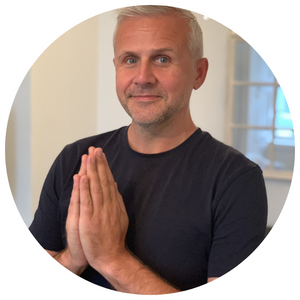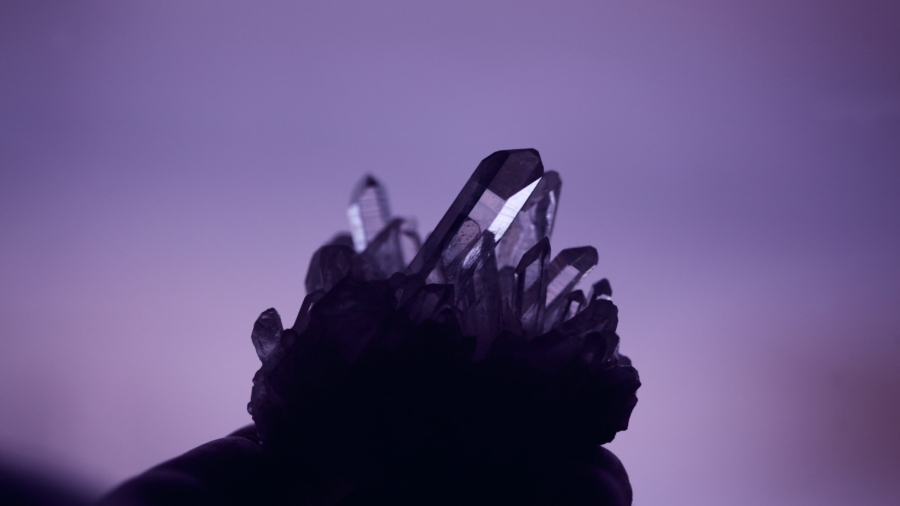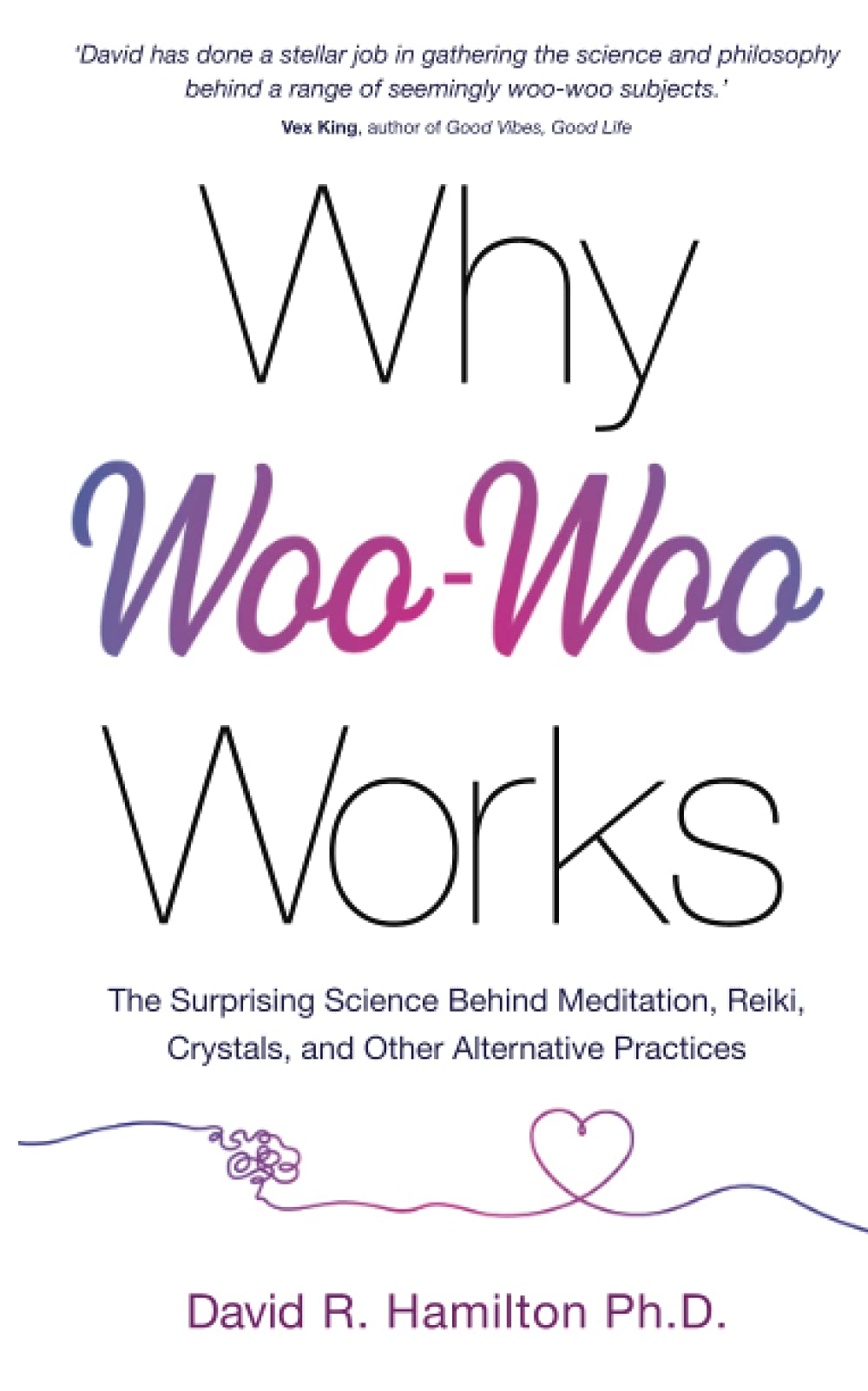by Dr. David R. Hamilton
The Oxford University Press’s definition of woo-woo is ‘Unconventional beliefs regarded as having little or no scientific basis, especially those relating to spirituality, mysticism, or alternative medicine.’1 The term is believed to have been coined in the 1980s, possibly in imitation of the wailing sound associated with ghosts and the supernatural.
Many complementary therapies, healing modalities, treatments, and other practices, theories, and beliefs are often referred to as woo-woo, but this is because they’re not widely understood and most people are unaware that in some instances, they’ve a sound basis in science.
In the late 1990s, after completing a Ph.D. in organic chemistry, I worked in the pharmaceutical industry, where I helped develop drugs for cardiovascular disease and cancer. Over time, I became fascinated by the fact that in clinical trials, the participants who were given a placebo (a dummy drug) instead of the real drug would very often see an improvement in their condition.
The prevailing belief among scientists was that this phenomenon, which is known as the placebo effect, was some kind of illusion – it wasn’t real. My suggestion to colleagues that there might in fact be an effect of the mind on the body – a supposed ‘mind–body connection’ – was dismissed as quackery.
And yet, even back then, research had shown that expectation (you will get better) and belief actually cause biochemical changes in the brain, and this underpins how and why the placebo effect works. The theory that the mind has an impact on the body wasn’t quackery after all. It was supported by scientific evidence. My colleagues and I were just unaware of it at the time.
This is often the case. Science spans a very broad region of knowledge, and it’s next to impossible to know everything about every scientific field. Most of us know a lot about one or two things or a small amount about a lot of things. Applying the label woo-woo or pseudoscience to certain beliefs, theories, or practices often betrays our lack of awareness of the available thought or research on them – whether it’s from philosophy, psychology, biology, physics, chemistry, geology, cosmology, or other disciplines.
While walking in a park with a friend one day I pointed to a cloud in the sky and told him that it probably weighed around 100 tons (90 tonnes). He laughed – not in an unfriendly way, but just at the preposterous notion that we can establish the weight of a cloud. For him, it conjured up an image of a giant set of kitchen scales. Clearly, it’s impossible to know such a thing.
But that’s not the case. A cloud is made of water droplets, and to ascertain its weight we can simply fly a drone through it containing a cup of known width and collect water droplets en route. First, the length of the cloud is measured by calculating the time it takes for the drone to fly through it at a given speed, and from there, it’s relatively easy to calculate, from the amount of water droplets collected in the cup and the approximate size of the cloud, roughly how much the cloud weighs.
I use this cloud weight example to demonstrate that we often question the veracity of particular theories or ideas simply because we know very little about them, or sometimes even because we’ve heard other people refer to them as unscientific and it would seem sensible to adopt the same viewpoint. We’re social creatures, after all.
In this book I take a number of subjects that are typically denounced as woo-woo and show that there’s quite a lot of scientific evidence for them, much of it largely unknown other than to those working in the relevant field.
The first part explores the placebo effect, visualization, meditation, and the link between suppressed emotions and disease. These are at what we might call the ‘lower end’ of woo-woo in that at least some people are aware of the scientific evidence that exists for them. I share that evidence with you, and also explain exactly how these phenomena and practices work.
I then move on to the field of complementary medicine, presenting an overview of the many research studies that show reiki is an effective therapy for managing pain, depression, and anxiety, and sharing the science behind this ‘energy healing’ technique. In the chapter on crystals, I draw on Buddhist philosophy, the science of color psychology, and even the diamagnetic and paramagnetic properties of these mineral stones to explain precisely how they work for us.
In the latter part of the book I delve into telepathy, distant healing, and prayer. Although these phenomena are often dismissed as pseudoscience, there is in fact a large amount of statistical evidence to support them, although it’s not widely known to the general public. As I discuss in the book, one of the key factors in the way they work is emotional connection: EEG and MRI studies show that the more emotionally connected two people are, the stronger any effects tend to be.
My interest in esoteric topics began when I was a child. My mum developed postpartum (postnatal) depression in 1976, following the birth of the youngest of my three sisters. The condition wasn’t well understood at that time – ‘Give yourself a shake,’ was one doctor’s recommendation.
She was prescribed antidepressants and anti-anxiety medication, but the thing that worked best for her was meditation. It didn’t cure her, but it helped her get to sleep, enabled her to better manage her state, and supported her mind and emotions through difficult times.
My mum’s practice was listening to a guided meditation tape every night before bed, and she continued with it for years because it worked so well. The tape featured relaxing music and the sounds of nature, which are now known to have a direct impact on the human autonomic nervous system.
Meditation has long been practiced in cultures around the world and yet it was considered pseudoscience in the West until fairly recently; in some places, that’s still the case. However, today we know with scientific certainty that meditation causes beneficial structural changes in the brain that help us with our mental health as well as with concentration, memory, and self-esteem – it’s even been shown to slow the rate of biological aging.
While I was growing up, my mum and I talked often about the power of the mind, and this shared interest, and my observation that it had helped her condition, led to my fascination with the placebo effect when I worked in the pharmaceutical industry.
In the years since, and even today, mum and I have had many more conversations about these and other ‘woo-woo’ subjects – many of which are covered in the book – and eventually these catalyzed a career change for me. I left the pharmaceutical industry and went on to write several books exploring the mind–body connection, self-esteem, and even the impact of kindness on mental and physical health.
In this book, I present the science behind woo-woo and reveal how and why it really works. I hope you enjoy it.

David Hamilton PhD is a writer, columnist and speaker. He holds a PhD in organic chemistry and spent four years in the pharmaceutical industry.
Bookshelf
Why Woo-Woo Works: The Surprising Science Behind Meditation, Reiki, Crystals, and Other Alternative Practices by David Hamilton PhD, published by Hay House, paperback (320 pages).



